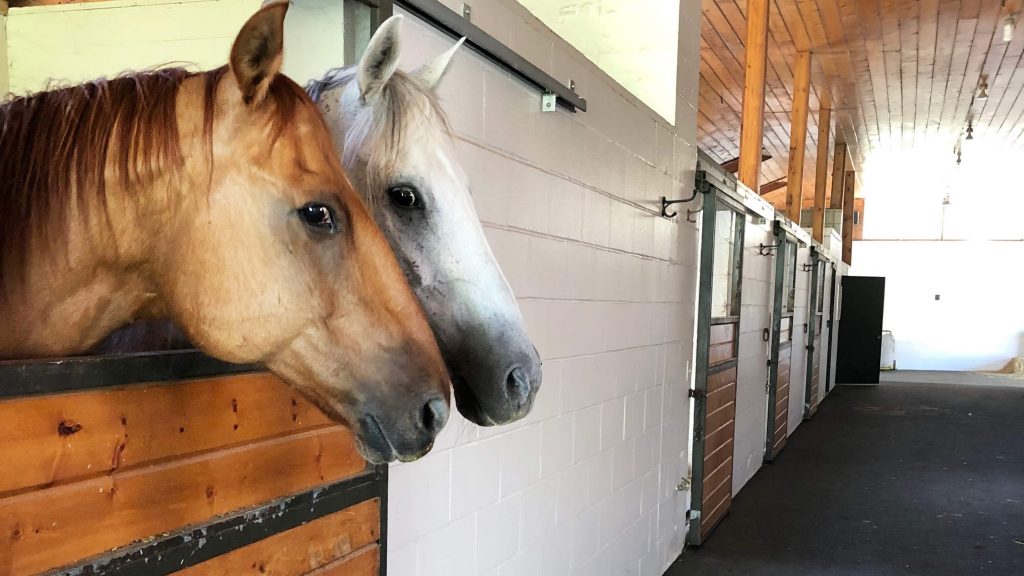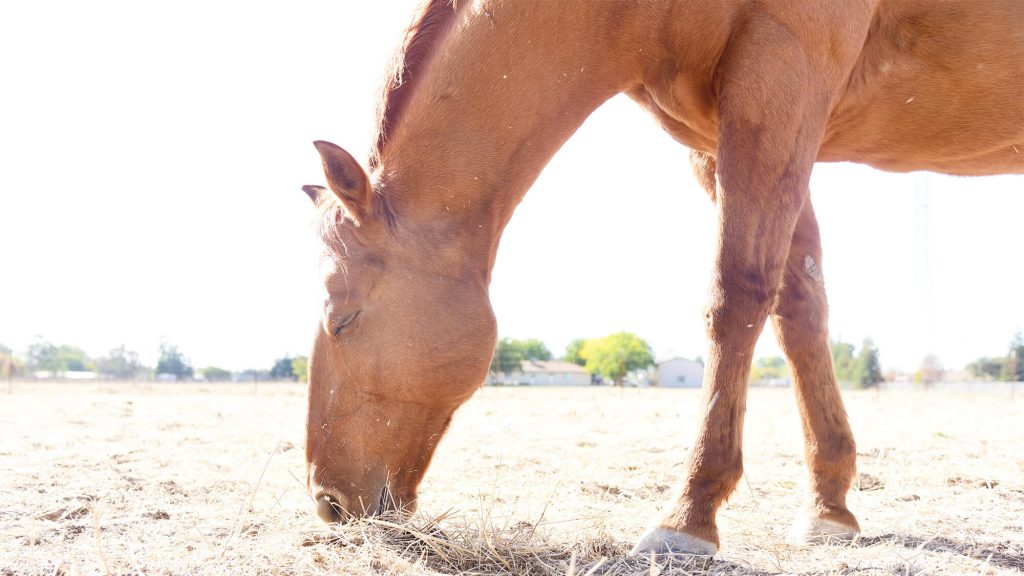Keeping horses in stalls….how do you feel about it?
Once, I visited a small zoo on a school trip. The tour guide was describing to the class how complaints about the small living quarters of their resident tiger were invalid, because the tiger was provided all his needs within that space. Only… the needs he listed were unbelievably limited: food, water, toys, a place to sleep. He actually said, “if someone brought you everything you needed, you would be happy to live in your bedroom & watch TV all day too!”
I was looking around, wondering why no one else seemed confused, wondering why everyone was nodding their heads as if that made any sense.
I love my bed, and if given the choice, you’ll find me staying in bed far too long. But does that mean I would be best kept locked up in my room? Obviously not! Wild and domesticated animals alike still have bodies designed for movement and minds that thrive on real life enrichment. Surviving is not the same as living.
I had never kept Tucker in a stall at the time, but it was at that moment that I truly realized that horses are often kept in even worse conditions, and that no one saw it as strange. Today, most people recognize zoo animals kept in cages as wrong, but it still seems incredibly normal to keep horses in small stalls around the clock… except for the hour or two every so often that they are pulled out, ridden, and put back. 🙄
Personal Experience
I know there are people who will say their horse loves their stall, so what could be wrong? Tucker LOVES going into stalls, but even with a pen attached to his box stall, this can be a problem for him. For a time last year, we were given the opportunity to live in a beautiful place in a forest with fantastic trails. The horses had box stalls with large pens attached, and turnout in a larger pen several days a week. Whenever I arrived when the weather was not perfect, like there might be a slight breeze, Tucker would stand in the doorway of the stall to the pen and wait for me to come say hi inside his stall. 🙄
Even though I saw him everyday, regularly taking him out on the trails, for the first time in his life, Tucker’s legs would often get stocked up! As in – he was standing still WAY too long. His pen wasn’t big enough to encourage enough movement throughout the day, and yes, when not faced with anything more interesting, he did in fact prefer to stay inside his stall, nibbling on hay and only left to get water and go to the bathroom. 😅
Just because he loves box stalls – that doesn’t mean I should conclude that he should therefore live in a box stall all the time! The novelty of having that box stall, while great for poor weather (or you know, a little wind or too much direct sunlight on an awful 70 degree day…), it was not great for his health. This experience was only for about 6 months, so long-term effects were not developed. We do visit barns for overnight stays sometimes, so Tucker still gets his stall fix! He’s become quite judgey of such things.

The Horse Living in a Stall
Many horses have grown up living that stalled life, and they truly don’t know that there is a better way. Physically, they might even appear to be perfectly healthy on the outside. But usually, the horse exhibits some kind of stress behavior that is often downplayed as a quirk, bad habit, naughty behavior, etc.
They will often have hoof problems, covered up with the band-aid of horseshoes (that’s a whole different topic), or experience general body issues. The funny part is, a lot of people spend a ton of money trying to fix all these issues, with chiropractors and acupuncture, massage and other therapies. Simultaneously, they pay high prices to keep their horse inside a pretty little prison.
That being said, horses are expensive and not everyone can afford alternatives. I too struggle to provide the best life for my horses. Even if you have to resort to a stall, there are things that you can do to help. Regular turnout, and a pen large enough to place water and food on opposite ends encourages adequate movement. 24/7 access to grass hay can take away a lot of the boredom and gastric health issues, too. Very few of us have access to good grazing pastures, so providing grass hay ad lib is the next best thing!
Nutrition of Stalled Horses
A horse kept in a stall might also be fed less, because they get less exercise and therefore will gain weight too easily. A horse denied access to forage will certainly fall victim to ulcers as well as be much more prone to colic. The fasting element also feeds those behavioral issues mentioned previously, as the horse is hungry AND bored for a majority of the day.
Feeding concentrated grain diets seems to go hand-in-hand with keeping horses in stalls. It seems crazy to me that this is still done today, when better information has been available for quite awhile. In a study done in 1999, gastric ulcers developed in all horses within 14 days of their removal from pasture, stabling, fed 6 kg concentrate feed per day and entering a simulated training regimen.*
All 30 horses in the study! (I’m not sure if these horses had ad lib access to forage or not.)
In a different study done ten years later, the risk of ulcers significantly increased when straw was the only forage available (and I don’t know many horses who enjoy eating straw), 1 g/kg bodyweight of starch per meal was exceeded, water was not available in the turnout paddock, and/or the interval between forage feeding was greater than 6 h. **
Most horses I know only receive meals twice a day, and they consume those meals in about an hour. That means they are without food for 22 hours of the day, best case scenario going approximately 11 hours without forage. And without much else to occupy their time, either. Ulcers seem like hard proof that the lifestyle choice that causes them is not adequate for the creature, don’t you think?

Concluding Thoughts
I have a pretty strong opinion on keeping horses in stalls as their long-term home. It never felt right while I was growing up, and now I know there is plenty of evidence that supports those feelings! Stalled life presents two main problems: restricted movement, and restricted forage. Other negative elements of life in a stall can include lack of a social life for the horse, lack of mental stimulation, lack of fresh air to breathe, and behavioral issues that develop because of all these things.
Sometimes it is hard to let go of traditions, other times we are restricted by the options that are available to us. We can only do the best we can, but hopefully society can catch up with science and “normal” will stop including small stalls as permanent homes for horses.

* Vatistas NJ, Sifferman RL, Holste Induction and maintenance of gastric ulceration in horses in simulated race training. Equine Vet J 1999;29:40–44. [PubMed] [Google Scholar]
** Luthersson N, Nielsen KH, Harris P, Parkin TDH. Risk factors associated with equine gastric ulceration syndrome (EGUS) in 201 horses in Denmark. Equine Vet J 2009;41:625–630. [PubMed] [Google Scholar]

